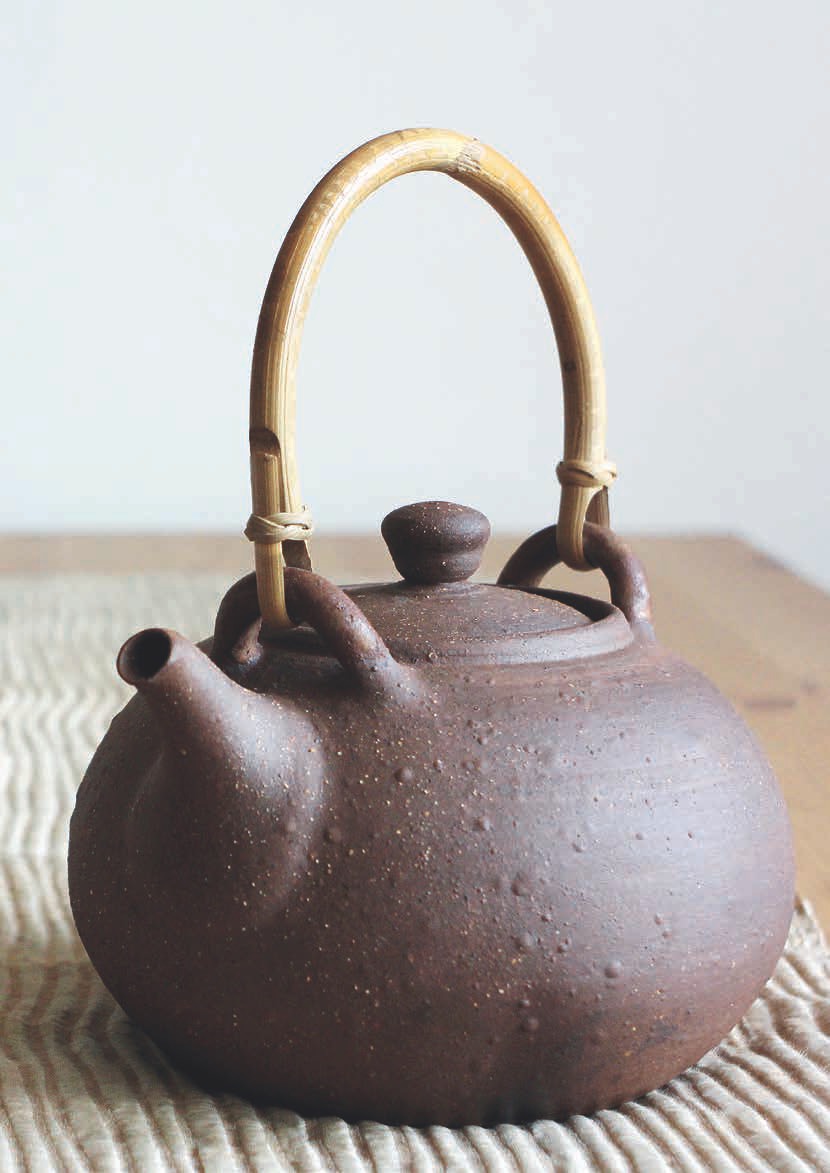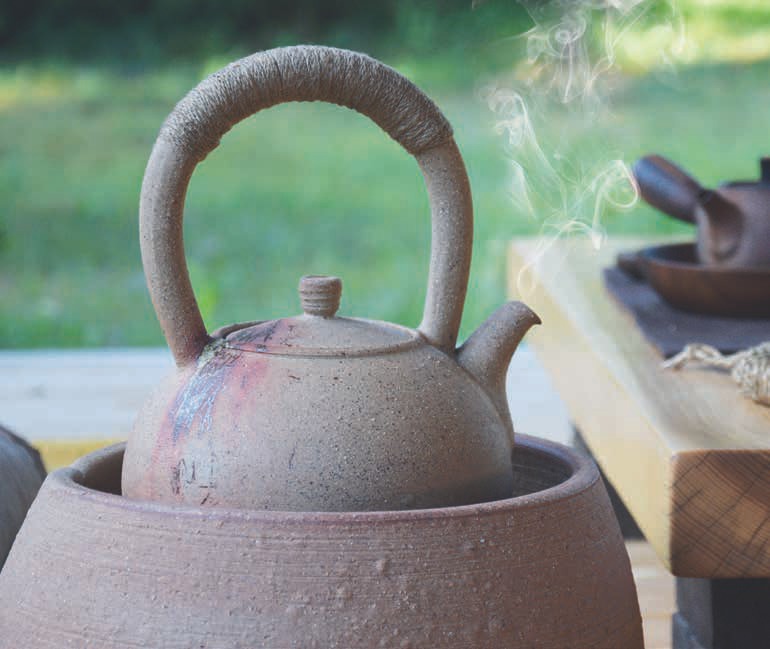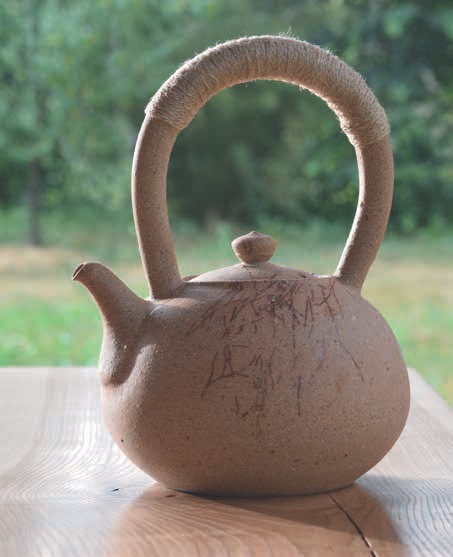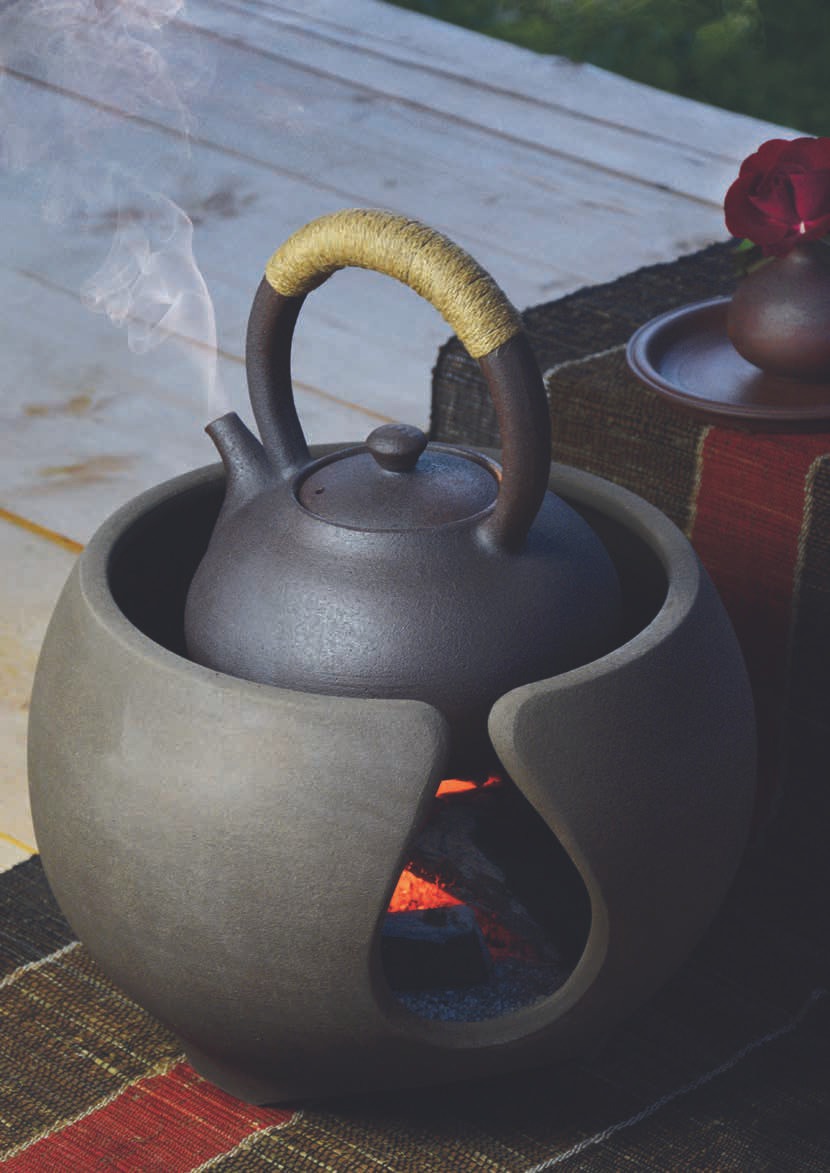
 |
|

Kettles for boiling water are, without a doubt, one of the most important kinds of teaware. After all, what would our tea sessions be without boiled water? For me, as a potter with a sincere love for tea which informs my ceramic work, clay kettles have always been a central part of my work and practice. When I reach over and rest my hand on the handle of a nice kettle, I feel how quickly nice teaware becomes a friend, bringing us tea-joy. To a potter, these wares are also inspiration and creativity.
Ultimately, humans have made clay cookingware since prehistorical times. Despite all the advancements in ceramic production, technology and firing, making a kettle from clay is still a difficult task indeed, especially in a small, artistic ceramic studio like ours. Before I share our journey of failures and successes in making kettles, let me first discuss some of the details and difficulties that go into making a kettle in general. Even though this article contains technical language that may be dry, it may help you understand why potters struggle when making cookingware and give you a bit of insight into ceramic production, which is, of course, something all tea lovers are interested in.
Thermal shock resistance is an elusive and seemingly magical quality we try to achieve when creating heat-resistant ceramics. When you bring up this topic in conversation, most people are puzzled. Ceramicware is fired at really high temperatures: most utility wares are fired between 1,100 - 1,400 °C, or even higher. So why can't such pieces survive the gas stove in our kitchen? The main reason is low thermal shock resistance. And the main troublemaker in the fired clay body is cristobalite, which is a crystalline form of silica. This forms spontaneously (within bodies) at temperatures above 1,100 °C (depending on the clay composition and firing schedule). Ordinarily, this form of silica has many benefits: it adds strength to our ware and helps to seal glazes to our pots. But cristobalite suddenly changes/increases its volume (around 0.8% change) at temperatures above 200 °C! Since ceramics are brittle, volume changes cause cracking. You might imagine that when the crystals inside the pot hit the 200 °C, they puff up a little bit like popcorn. They then shrink back down as they cool. Sooner or later, the pot gives up and releases this tension in a crack. How do we overcome this problem? There are three main options, and there are pros and cons to each of them.
Underfiring: This technique has been used for millennia, since the Neolithic era. As cristobalite is formed above 1,100 °C, potters sometimes fire cookingware at lower temperatures. Such pots are porous, fragile and can break easily. Before the invention of metal cookware, however, these underfired pots were used in kitchens all over the globe. Unfortunately, even when they are well-crafted, these wares usually weaken over time and start to leak. Our great-grandmas were using them daily. When these pots started to leak, they just found another use for them; as storage for grain or vegetables, for example. They then visited the local potter to commission or trade for a new one. In the world of kettles, the Mulberry Creek stove and kettle sets from Chaozhou, which are one of the Four Treasures of gongfu tea, are classic examples. Japanese bofura for sencha are based on the Mulberry Creek stoves and kettles, and are, therefore, similarly made.
Cordierite: An extremely lightweight material with low thermal expansion and excellent strength, rigidity and thermal shock resistance. Even though cordierite is widely used in big factories to make kiln furniture, it is quite difficult to find, mix with clay and then fire to the right temperature. To develop its shock resistance, it requires a special firing schedule that takes it over 1300 °C. This is not easy to achieve in small studios and workshops. My guess is that many of the kettles that are suitable for gas and electric fires that you can find from bigger companies (such as Lin's, for example) are all produced in this or the following way.
Clays with the lowest amount of free silica possible: This means that little to no cristobalite will be formed during firing. There are some clays in the world that fit this bill, even in their natural state, prior to blending, but they are pretty rare. This means that such material has to be mixed from several minerals, types of clay and feldspars. Aside from a lot of testing to find the right recipe and firing curve, there are a few other problems with this method as well. Most glazes will not work on non-cristobalite clays (they crack or flake off), so special glazes have to be made to suit such clay. Also, the firing curve has to be very accurate - if you underfire even slightly, the pot will leak. If you overfire, on the other hand, the pot will collapse. Nevertheless, despite all the challenges this technique brings, in my experience, searching and testing to create this kind of special mixture of clay and firing technique is usually the way most teaware artists solve the problem of thermal shock resistance.
So which of these three ways are we using to develop our kettles? Over the years, we have actually traveled down all three of these roads, finding several blind alleys, each filled with dozens of cracked, leaking or collapsed kettles...
When we started, we hoped that the easiest, good old-fashioned way of underfiring the kettles would work for us, as it has for the most famous kettle makers in history. But we soon realized that such pots are fine for slow cooking in an oven or old-style wood/charcoal stove, but are not strong enough for gas fire or electric/infrared stoves. Also, when used without glaze, they leak and the water often tastes of clay. Some of you may have experienced this "clay water flavor" in lower quality Chaozhou Mulberry Creek kettles or Japanese bofura. Such an influence on the water can be nice with some water and tea, like rich and complex teas, such as aged puerh, but all too often it ruins most teas, especially delicate ones, like oolong. Therefore, we kept on our journey, searching for a better kettle solution. There had to be a way to make great kettles for tea lovers!
Eventually, we found a company offering cordierite clay, ready to use. This looked great! After experimenting with the right firing and designs, many tests later, we slowly started to produce kettles made from this clay. They produce quite nice water for tea, do not leak and the clay itself is nice to work with. However, after some time, a percentage of these kettles started cracking. A few kettles had been working for many, many sessions before they cracked, while others cracked very quickly. We were not sure why, but there was no cracking over a charcoal fire, so we started to realize that these kettles are only useful for those who are exclusively using charcoal for tea. The more martial heat of electric and gas burners may crack them. This may have to do with the precision needed in firing this clay. You can see one of the first examples of this kind of ware at the Center. It is an antique already, from the days when this amazing Global Tea Hut magazine was just a few black and white pages and called a "newsletter!" Anyway, not all tea lovers can use charcoal, and even for those who use charcoal regularly, there is still a need to put one's kettles on gas or electric stoves sometimes. Our aspiration to make kettles for everyday use, so people could have a nice tea session with convenience, was not yet satisfied, and so our kettle journey continued onwards...
After about two years, we again started intensively looking for an improvement in kettle design. Inspired by a few recipes we found in ceramic books and online, combined with articles on this topic from several pottery magazines, we started blending, firing, testing and then blending again - over and over... A few months later, our first kettles were made and tested. Interestingly, at around the same time, we found a new supplier of clays for our regular work and there was a "flameproof " clay they offered in their catalogue. With a lot of skepticism, we gave it a try (we already had tried so many "flameproof " clays that didn't prove effective). We were surprised to find that this commercially produced clay was very close to the best one we were mixing at home, after years of trial and error. As mixing clay is quite difficult on a small scale, with many practical problems, it was logical for us to use this ready-to-go clay, especially since it was so close to ours. The problem was that this clay was a bit boring: pale white when fired unglazed, and, worse than that, the water prepared in these kettles was not that great for tea. We continued blending, adding iron oxide, iron scales, grog and other natural clays to achieve a clay that would not only survive any kind of heat, but also look nice and improve our water for tea. A great kettle should be pleasing aesthetically and also function well. It should have a nice effect on the water for tea, making each kettle sweet and adding depth and brightness to the tea we brew. This process of improvement is ever ongoing, as there is always room for growth!


Recently, one of our tea friends asked me what the main focus is when creating kettles. I started to explain our journey (as I have for you) of searching for a beautiful clay with thermal shock resistance. But I also realized that he was not just asking about the clay. What else is important when creating kettles? Some points are more subjective, as for example, aesthetic and visual touch, but some are more universal. Here are a few functional aspects of a kettle worth considering:
The spout: A bigger, more open spout is practical on a bigger kettle, especially when used for bigger tea settings and ceremonies, bowl tea or bigger sidehandle pots. But if you are looking for the perfect gongfu kettle, you will be after a more precise pour with good flow that is easy to control. So we focus on this when thinking about spouts. A spout is the most difficult part of a pot.
Handles: A good handle should give the kettle not just an aesthetic harmony, but also balance when pouring and handling the kettle. Our handles vary depending on size and shape of the pot. Some handles fit aesthetically and functionally on certain types and sizes of kettles, and not on others. The handle has a lot to do with the feel and pour of a kettle.
Lids: Over time, we've found that the lids on kettles have to fit right and also be heavier so steam will not lift them during a full boil. They also need to sit well when pouring.
Sieves: Kettles, unlike teapots, are often made without sieves inside the spout. But some tea lovers ask for a sieve for their smaller kettles, so they can boil tea or brew tea leaves directly in the kettle when necessary. Removing the sieve is better for the flow of the water and the pour is clearer, so a single hole is better for gongfu tea. Therefore, we keep this option just as a possibility for boiled tea kettles and the rest we keep simple, without a sieve.
As I reflect on our kettle journeys today, I am quite confident that we are on the right track. Making kettles brings us joy, offering people the chance to improve their tea practice. But there are still many things to improve, consider and tune up. We are keeping in touch with the Chajin who use our new kettles, asking for feedback and criticism. One of the main problems is the vast variety of stoves, hotplates and braziers on the market today: From candles and alcohol burners to maintain temperature, to super fast professional infrared hot plates, it is difficult to promise that the particular clay will work on everything. In order to prevent future problems, we try to consult with the one commissioning the kettle, and meanwhile, try to create a kettle for every setting. It is challenging, but we are still devoted to the process of handmade clay kettles, created with a passion for clay and a love for tea. This is a living, growing adventure, and we are happy and grateful to be a part of it. Producing better kettles has not just improved my ceramic practice, but deepened my understanding of tea preparation, not to mention the joy of a good kettle to travel this path with.

